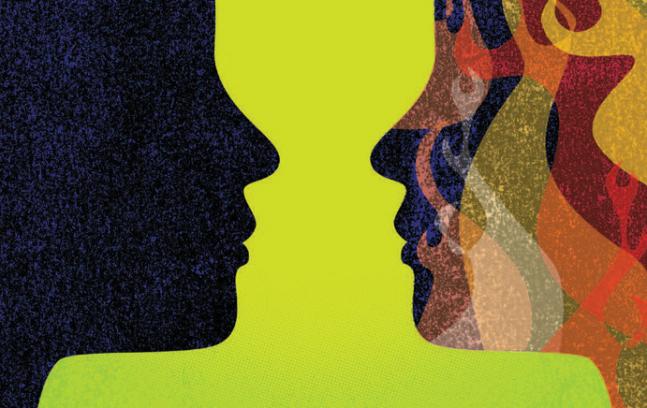Social Anxiety

Nancy Carlisle measures brain responses to faces on a computer screen to determine how responses by people with social anxiety differ from responses by those without anxiety. (Image by Michael Austin/theispot.com)
Social anxiety, the fear of interacting with other people that brings on self-consciousness and feelings of being negatively judged and evaluated, leads to feelings of inadequacy, inferiority, embarrassment and depression. This fear of being evaluated negatively by other people is the focus of recent work by cognitive neuroscientist Nancy Carlisle.
Carlisle, assistant professor of psychology, focuses on the processes of attention and working memory. Working with researchers at Oklahoma State University, Carlisle studied how attention and working memory of faces are altered in people with social anxieties.
Scientists know that face recognition occurs quickly, within 170 milliseconds of seeing a face. Interpretations about others are often based on facial processing—whether the person is smiling or frowning, approving or disapproving. This interpretation influences the way we relate to others around us. In a study of 40 participants, Carlisle and her colleagues measured brain responses to faces briefly presented on a computer screen. The faces had either a neutral expression or one of disgust. Participants needed to remember four faces for a memory test approximately five seconds later. The researchers were most interested in how the brain responses for those with social anxiety would differ from those without anxiety.
Carlisle and her team found that socially anxious individuals were more likely to devote their attention to faces expressing disgust. They were also more likely to keep the disgust faces in working memory. These effects occurred even though both disgust and neutral faces were equally important for the task. By measuring the attention and memory responses directly from the brain, the researchers could show that these biases were present beginning around 200 milliseconds after participants viewed the faces. In contrast, individuals without social anxiety did not show evidence of preferential attention and memory to disgust faces.
"We're definitely tapping into something that is difficult to pinpoint using behavior alone," Carlisle says. "The brains of individuals with social anxieties seem to have biases that emerge very early on in processing faces, and this change in focus happens even when there is no reason to attend to the negative faces. This suggests that people with social anxiety experience the world in a different way and that the focus on negative expressions is outside of their control."
Cognitive theories of social anxiety disorder suggest that biased attention plays a key role in maintaining symptoms. These biases include self-focus and attention to socially threatening stimuli. Carlisle's work suggests these anxiety issues are shifting the early stages in which people process faces. This is a good example of how studying basic cognitive processes like attention and working memory can inform our understanding of complicated disorders, says Carlisle.
"If a person's brain is more tuned to stimuli that are negative, and that's what they attend to and remember, it's easy to see how that would reinforce issues of anxiety. If you see a crowd full of people, but your visual system pulls out the one that is negative, that will shift your perspective on the world."
Story by Robert Nichols
Posted on:

